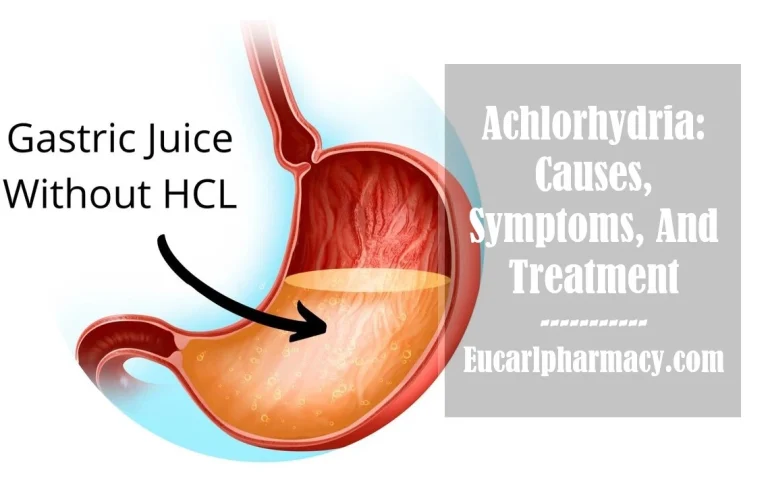5 Tips for treating Conjunctivitis (Apollo) in Nigeria
Conjunctivitis (Apollo) is a viral disease condition that affects the eyes. Its name refers to a set of illnesses that cause the conjunctiva, the protective membrane that covers exposed regions of the sclera, or the white component of your eye, and lines the eyelids, to swell, itch, burn, and become red. A virus that is highly contagious and quickly spreads is what causes it.
Conjunctivitis (apollo) can infect one or both eyes. Conjunctivitis typically doesn’t hurt when it first manifests, although it could indeed be stressful. This doesn’t typically impair vision.
Usually, treatment isn’t required for viral conjunctivitis since your body’s antibodies typically wipe this up in one, or 3 weeks. Emollients, mirrored sunglasses, and even cold massages applied to such eyes on a few occasions daily might help. However, some types of conjunctivitis will require medical attention.

Some manifestations of conjunctivitis; apollo potentially causes irreversible impairment to the cornea even though the condition alone is rarely harmful. Your vision may then be impacted as a result.
If medical care is put off, the infection could get worse, inflame the cornea, and result in blindness. Rapid diagnosis and treatment will lessen the dangers and chances of this condition.
Read Also: Achlorhydria: Causes, Symptoms, And Treatment
The transparent membrane of the eye, the conjunctiva, becomes inflamed as a result of an infection or irritation brought on by bacterial, viral, or allergic factors, which is termed conjunctivitis, often referred to as Apollo (non-jargon name), sore eyes. The conjunctiva’s blood vessels swell, as a result, giving the eyes a noticeable pink or crimson tint (red-like).

5 Tips for treating Conjunctivitis (Apollo) in Nigeria
Conjunctivitis; apollo resolves on its own and usually resolves on its own within two weeks. The discomfort was relieved with the use of artificial tears and cool wet wipes around the eyes and with the use of other eye medications.
Ophthalmologist advises against the use of steroid eye drops. Encompassing below are the five tips for treating conjunctivitis; Apollo:
Identify conjunctivitis (Apollo)
Those affected should immediately notify eye care professional for appropriate identification and possible treatment; based on the particular type of conjunctivitis (Apollo). If the condition does not resolve or worsens within 1 week, please consult your nearest ophthalmologist.
Conjunctivitis (Apollo) is contagious, infected people should keep as far away from unaffected people as possible to prevent the spread of the disease.
Do not use urine, breast milk, and acids, among other toxic substances, for conjunctivitis; apollo because such practices are harmful to the eyes.
secondary bacterial infection is best treated with antibiotics.
Treatment for conjunctivitis (apollo) depends on the cause of the disorder. This is because some of them don’t require treatment, while some it.
Treatment of Conjunctivitis (Apollo) According To The Specific Type Of The Conjunctivitis
Conjunctivitis (Apollo) is a self-limiting virus, which means it cannot be cured with topical or over-the-counter medications. It is a viral infection caused by drought, more common during the dry season. Encompassing below are the different types, causes, and treatments of Conjunctivitis; Apollo:

1. Viral conjunctivitis (Apollo)
Several different viruses can cause conjunctivitis. Some, such as enteroviruses and adenoviruses, can spread rapidly in the community, leading to outbreaks of conjunctivitis (visible red eye), while other types mainly cause skin infections (molluscum contagiosum, herpetic infection) and eyes can become infected if they get on eyelids.
Viral conjunctivitis is a fluid form of conjunctivitis that almost always affects both eyes. Patients may complain of foreign body sensation, lacrimation, discharge, redness, and swelling of the eyelids.
Treatment
There is no specific treatment for viral conjunctivitis and the condition will improve on its own. Antibiotic eye drops prevent secondary bacterial infection, and tetracycline eye ointment can be soothing. Conjunctivitis brought on by infection shouldn’t ever be treated with topically steroid ocular drops.
2. Molluscum contagiosum Conjunctivitis (Apollo)
A virus that causes a skin infection known as molluscum contagiosum can also infect the eye if the mollusk is on the eyelid.
A patient (usually a child) comes with one or more eyelid problems, with small, round, waxy, whitish, navel-shaped nodules on the eyelid.
Treatment
This condition does not improve on its own and treatment consists of removing the eyelid lesion with a curette or other blunt instrument.
3. Blepharoconjunctivitis herpes simplex
More common in children. The child shows fluid-filled blisters on the skin around one eye and a red, painful eye that may be sensitive to light.
Treatment
Treatment with antiviral eye drops or ointment (eg, idoxuridine, acyclovir). Note: Steroid eye drops should never be used as they make the infection much worse.
4. Bacterial conjunctivitis (Apollo)
i. Acute conjunctivitis: In contrast to viral infections, bacterial conjunctivitis typically affects just one eye but instead produces a further flow of water and swelling of the lids.
Treatment: Broad-spectrum topical antibiotic such as tetracycline eye ointment.
ii. Chronic Bacterial Conjunctivitis: Bacterial infection of the lid margins can lead to chronic conjunctivitis. The patient complains of pain in the eyelids and pain in the eyes with a small amount of discharge.
Treatment: Since the cause of conjunctivitis is an infection of the eyelids, treatment focuses on the eyelids and consists of tetracycline ointment applied three times a day after cleaning the edges of the lids to clear the crusts.
5. Gonococcus-caused conjunctivitis
Some people are at risk of developing a very serious form of bacterial conjunctivitis caused by the Gonococcus organism, including Newborns who contract the infection during delivery; Adults who contract the infection during sexual activity; and People of any age who have used urine contaminated with Gonococcus as a traditional remedy.
i. Cleaning the baby’s eyelids, and instructing the mother on how to do so, is part of the treatment. Tetracycline eye ointment or another type of antibiotic eye ointment should be applied, and you should demonstrate how to apply it to the mother.
As soon as you are certain she can apply the ointment, hand them a tube of tetracycline (or even another antibiotic) and instruct them to apply it to both eyes once each hour.
ii. Treatment of adults: Prescribe antibiotic drops or ointment and tell the patient to apply the treatment every hour. They should be told that the infection is serious and that they should go to the eye clinic.
6. Chlamydia Conjunctivitis (Apollo)
The infant’s infection begins a few days after birth, and the mother notices swollen eyelids and discharge. A child may also have a chlamydial infection of the lungs, ears, and nose.
Treatment
Clean eyelids and apply tetracycline ointment. Show this to the mother and tell her to apply the oil four times a day. The child should also be treated with oral erythromycin to clear the infection from other parts of the body.
7. Trachoma Conjunctivitis (Apollo)
Trachoma infection mainly affects children. The child may not complain of any symptoms or may have some discomfort and discharge.
During the examination, the upper eyelids are slightly swollen and sunken, the eyes are slightly red, and there is a slight discharge.
Treatment
The child should be treated either with tetracycline eye ointment three times a day for six weeks or with a dose of 20 mg of azithromycin per kg of body weight.
8. Allergic conjunctivitis (Apollo)
There are two forms: acute and chronic Allergic conjunctivitis.
This often affects both eyes in response to allergens. To fight these allergens, your body produces antibodies known as immunoglobulin E (IgE), which in turn attack special cells known as mast cells and histamine.
i. Acute allergic conjunctivitis: Sudden and severe itching of the eyes and eyelids occurs in adults or children as a result of contact with something to which the person is allergic (eg, pollen, cats).
The eyelids and conjunctiva are noticeably swollen and the eyes tear profusely and are usually not red. The situation will improve on its own very quickly.
ii. Chronic allergic conjunctivitis: Vernal keratoconjunctivitis has an unknown etiology, but as it frequently coexists with dermatitis or asthma, it is most likely the result of a protracted allergic reaction.
Symptoms of the ailment include persistent itching, a thick, clear, stringy discharge, light sensitivity, blurred vision, and eye discoloration. The condition typically begins between the ages of three as well as twenty-five.
Treatment
Treatment is not easy at the primary level, and if the symptoms are severe, or the cornea looks hazy, the management is referred to an eye department.
Chemical conjunctivitis (Apollo)
Many different substances put in the eyes can cause chemical reactions (For instance, a reaction to ophthalmic drop preservatives or conventional treatments). The findings are similar to that seen in viral conjunctivitis, so the history is important.
Treatment: Instruct the person to stop inhaling the substance that caused the reaction. Tetracycline eye ointment can be soothing and prevent secondary bacterial infections.
Read Also: Leishmaniasis: Types, Causes, Symptoms, And Treatment
Symptoms of Conjunctivitis (Apollo)
While conjunctivitis can affect one or both eyes, it is the cause of the disorder that differentiates the symptoms. But some peculiar symptoms encompass:

- Redness.
- Watery outflow forms a crust-like structure around the eyelids, preventing the eyelids from opening.
- Continuous tearing.
- Throbbing (itching).
- Eye pain.
- Feeling of grit or burning; especially when blinking.
- Sensitivity to light.
- Swollen eyelids.
Tips For Preventing Exposure To Conjunctivitis (Apollo)
- Conjunctivitis is contagious, infected people should keep as far away from unaffected people as possible to prevent the spread of the disease. People should refrain from sharing towels, bedding, and other items with those affected.
- Affected individuals are advised to stay away from school or work until conditions resolve.
- Maintain good hygiene: Wash your hands frequently and practice personal hygiene, and avoid rubbing your eyes with dirty hands to prevent illness. Basic hygiene to prevent the spread of any bacterial or viral conjunctivitis. Avoid sharing towels, clothing, facial cosmetic, or eye drops.
Conclusion
Conjunctivitis (Apollo) is a self-limiting virus, which means it cannot be cured with topical or over-the-counter medications. It is a viral infection caused by drought, more common during the dry season.
Treatment tips for conjunctivitis Apollo are specifically based on the chief cause of it. This is because some of them don’t need treatment to go whereas, some require mostly the use of antibiotics.
On a general note, good personal hygiene is optimum in preventing the spread and healing period of conjunctivitis.






